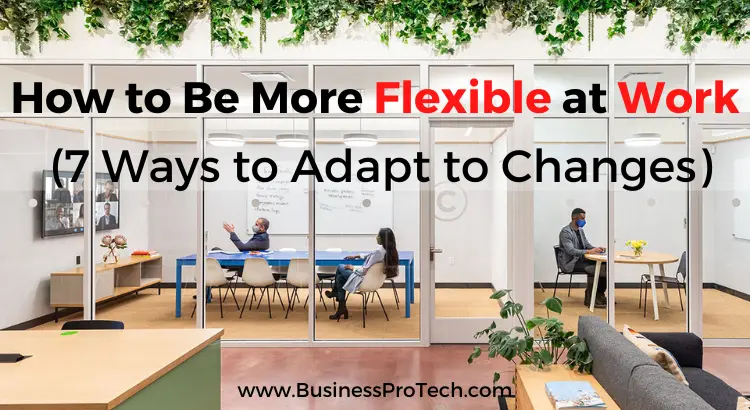Most people do not like change. However, it still happens. Workplace changes put professionals on edge since they can often deliver a round of layoffs, even at the executive level.
Otherwise, changes usher in new budgetary constrictions that force departments to make cutbacks, which also cause a stir.
Once people enter their professional comfort zones, they want to remain in them, especially if they have figured out how to thrive.
Sometimes companies must pivot and alter workplace norms to keep up with the markets or trends. Other times, management makes bad decisions and must atone for the ramifications.
In 2023, technology and software have disrupted all business sectors. Silicon Valley always sought to improve processes and eliminate redundancies. Software delivered and forced companies to adapt to new standards and workers to obtain new skills.
Adopting new norms in the workplace requires flexibility and confidence from professionals.
The following information outlines how to be more flexible at work with seven ways to adapt to change.
Maintain a Positive Outlook
In the face of shifting business processes, maintain a positive outlook. Companies need employees and staff to become team players. If the situation renders budget cutbacks or layoffs, avoid burning bridges.
Maintaining a positive outlook has several health benefits. It also:
- Lowers the risk of depression
- Reduces stress
- Wards off illnesses
Plus, professionals can keep their eyes on the prize, such as income-earning potential. Employers favor staff who can keep a positive outlook in adversity.
Companies might need employees to scout new territory and spend an extended stay in that area – that’s good news! It puts professionals in promising positions for future growth.
Prepare Yourself for the Changes
Once professionals learn that their companies plan to alter standard operating procedures, prepare for them.
Organizational changes are among the most common alterations, including transformational and personnel. Managerial changes do have great departmental effects. New managers want to put their stamp quickly to prove that the executives who hired them made the right choice.
Thus, they might shuffle the department or bring in their teams.
Until someone with authority meets with the affected personnel, prepare for the possible outcomes.
Understand Industry Changes
Sometimes companies must adapt to outside forces. The years 2020 and 2021 brought unforeseen circumstances across the economy and business world.
In normal circumstances, the top companies in every industry keep an eye on each other. Some industries have clear leaders while the rest battle for second place. In other fields, the top companies have a shot at landing the most market share.
Professionals who stay abreast of industry changes can adapt more quickly to alternations in the workplace without fear. They understand the conditions and prepare for them accordingly.
Also Read: The Hidden Disadvantages of Working from Home
Focus on What You Can Control
Maybe humans don’t like change since it takes a lot of control out of their hands. Thus, focus on the things that remain within it.
For example, professionals can control their daily attitude despite any chaos surrounding them.
Individuals can also control how much information they obtain about the coming alterations to company operating procedures or organizational charts.
Ask Questions
During this time, stay informed by asking questions. Company decision-makers can only divulge limited amounts of information to non-authorized personnel.
Nonetheless, ask the appropriate representatives questions instead of spinning the wheels aimlessly.
Then, stay on top of company communications and meetings.
Self-Assess Skills
Every company change has a purpose. New management aims to establish itself while existing executives must keep the company afloat.
As the process unfolds, run a skills self-assessment. Then, match it to the needs that will result from the changes.
For example, restaurants continue experimenting with self-order kiosks and automated food assembly lines. As technology and robots enter the restaurant industry, it cuts down human jobs. However, someone will need to maintain those robots.
Since those skills have significant demand initially, it’s a good idea to be among the first who master them.
Adopt an Executive Mindset
It’s easy to express displeasure over the organizational things that will change. However, professionals can also pick to adopt an executive mindset.
Understanding why company executives have made their decisions doesn’t always change the fact that some staff will lose their job or that departments will have fewer funds to spend.
It does allow professionals to learn from the circumstances, which is essential for those who plan to climb the corporate ladder or dabble in entrepreneurship. There are also executive leadership programs that can help with this and teach how to execute strategies and drive change.
Conclusion on How to Be Flexible at Work

Very few people willingly accept change. When workplace changes come down the pipeline, adapt to them by asking questions, preparing for them, and keeping a positive outlook.
Remember: flexible trees survive storms while rigid ones snap. By staying adaptable, you’ll not only survive changes at work – you’ll grow stronger because of them.